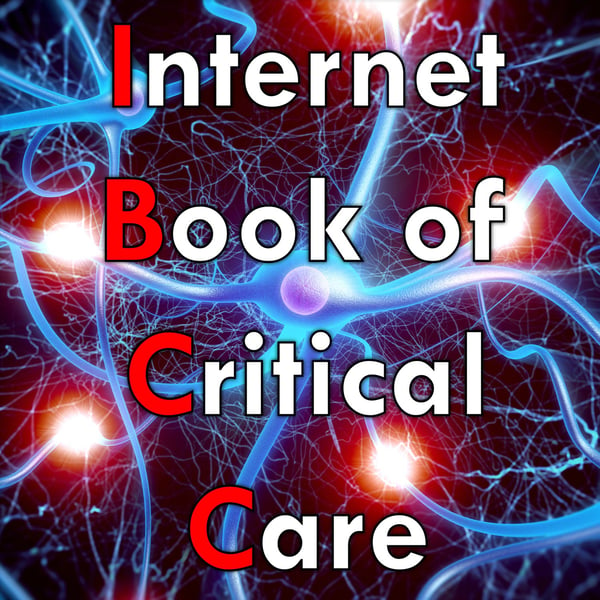IBCC COVID-19 Update #4
The Internet Book of Critical Care Podcast
Adam Thomas
5 • 714 Ratings
🗓️ 21 April 2020
⏱️ 25 minutes
🧾️ Download transcript
Summary
In this update:
The Fall of Remdesivir?
HCQ no so bueno?
Fluid status
Learning from Tobin, Gattinoni, and our patients physiology
Steroids!?!?
Transcript
Click on a timestamp to play from that location
| 0:00.0 | Welcome back to the Internet Book of Critical Care podcast. I'm here with Adam Thomas, and we're going to do update four, although it feels like it's been a year, but I think it's only the fourth update. |
| 0:13.6 | It sure is, Josh. So today we're going to cover the crossing off, shall we say, of potential antivirals. Then we'll go into fluid status. |
| 0:24.1 | Josh is going to take on the steroids with an accompanying post coming out very soon. And then |
| 0:28.7 | we're going to finish it with a further explanation of the hypoxemia versus hypoxia |
| 0:35.1 | physiology and how this pertains to particular patient physiology. |
| 0:39.8 | So Josh, let's get straight into it. When you move the goalpost, you eventually will score, correct? |
| 0:44.3 | Let's talk about remdesivir. |
| 0:46.0 | You know, a couple of weeks ago, everyone thought remdesivir was going to be a golden bullet for this |
| 0:50.3 | virus. And of course, it's now kind of falling apart.. So Gilead did this bizarre. I don't |
| 0:55.3 | it's not a trial. I don't even know what to call it. Basically, they gave compassionate use |
| 0:59.5 | remdesivir to a bunch of patients, but I think they selected them very carefully because they |
| 1:03.5 | only gave them to like 60 patients out of like thousands of patients who wanted remdesphere. For those |
| 1:07.7 | of us on Twitter, everyone was like tweeting at Gilead that like they needed the remdesivir. So got this tiny group of patients. They gave them the remdesivir. |
| 1:14.4 | The group was extremely heterogeneous. Some of the patients weren't very sick. Some of them were |
| 1:17.5 | sick. And overall, the outcomes were okay. A fair number of patients on ventilation came off ventilation. |
| 1:23.0 | A lot of the patients who were on room air or low amounts of oxygen did fine. So really, I think this study shows nothing other than the fact that it's like a bizarre design and I don't know why it |
| 1:31.9 | was published in New England Journal. And now we see that they're just enrolling more and more |
| 1:37.0 | and more patients into there. And I must say from a clinical perspective, if a drug works, |
| 1:41.3 | you don't have to keep throwing in more numbers to find a potential |
| 1:45.2 | benefit. The signal should be there. The other thing for me is the possible safety concerns |
| 1:49.9 | with potential, it's weird how they reported them possible adverse events. It's not so clear, |
| 1:55.3 | is it, Josh? Yeah, so the problem is this was an uncontrolled trial or whatever it was. So bad |
... |
Please login to see the full transcript.
Disclaimer: The podcast and artwork embedded on this page are from Adam Thomas, and are the property of its owner and not affiliated with or endorsed by Tapesearch.
Generated transcripts are the property of Adam Thomas and are distributed freely under the Fair Use doctrine. Transcripts generated by Tapesearch are not guaranteed to be accurate.
Copyright © Tapesearch 2025.

